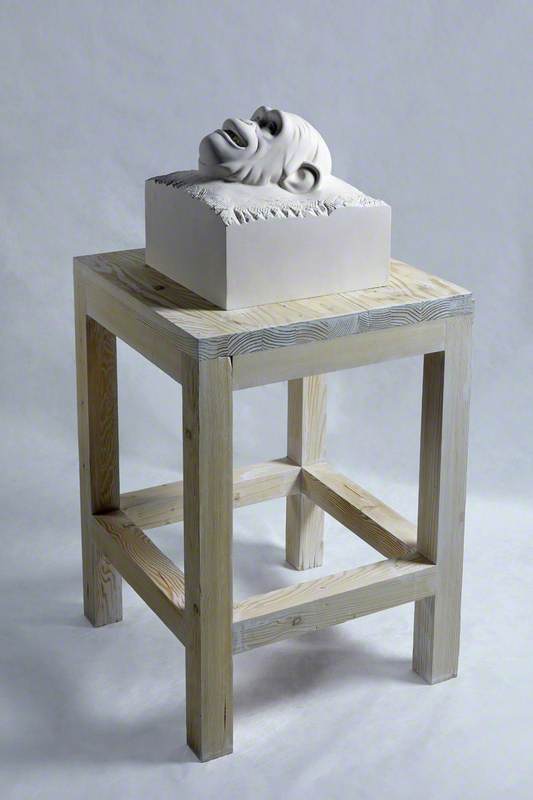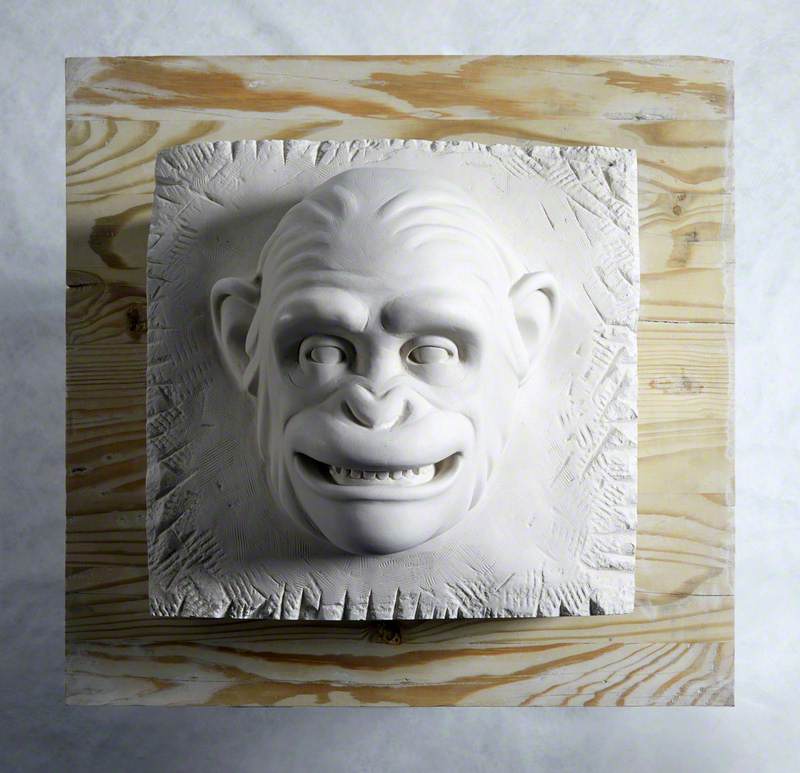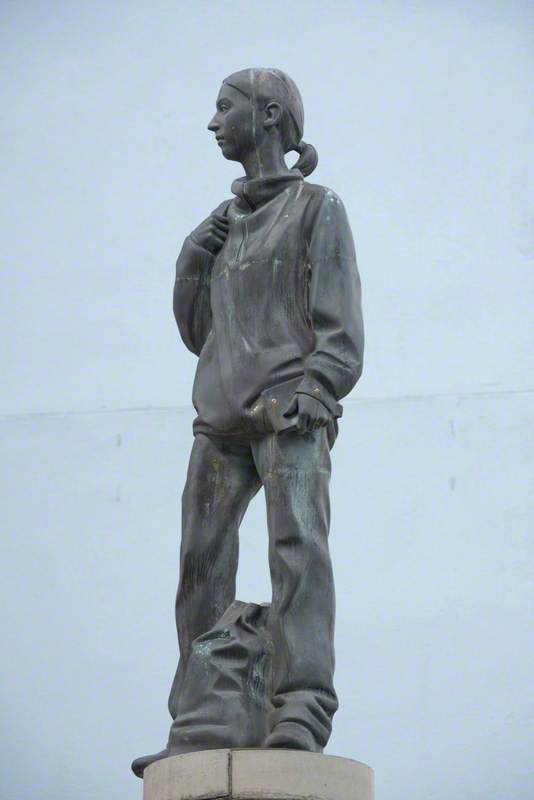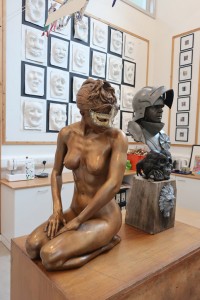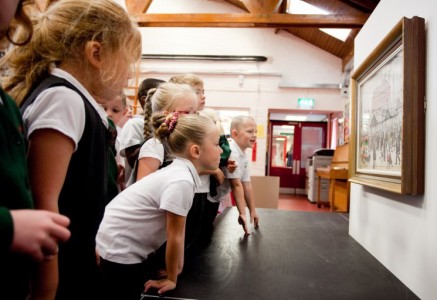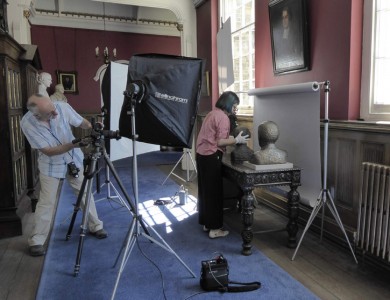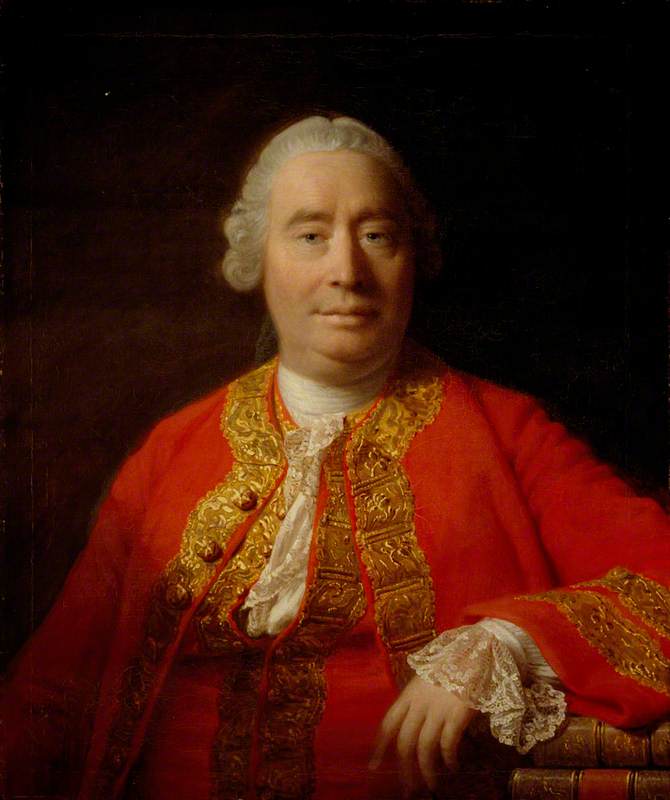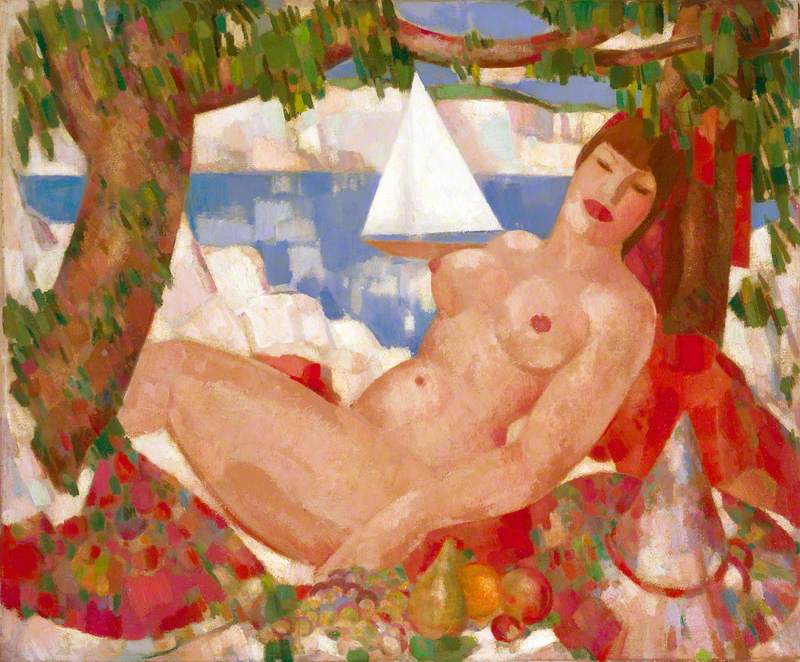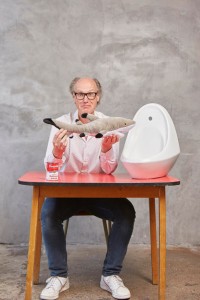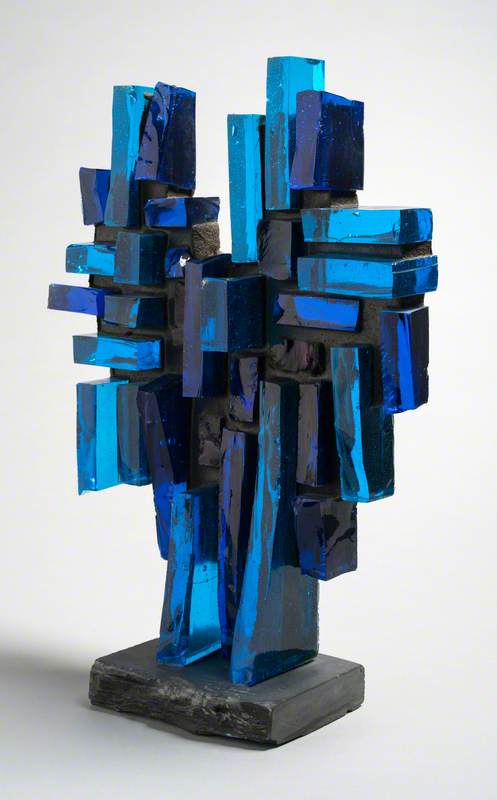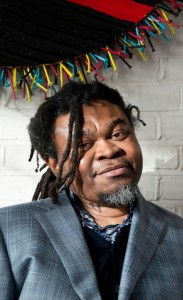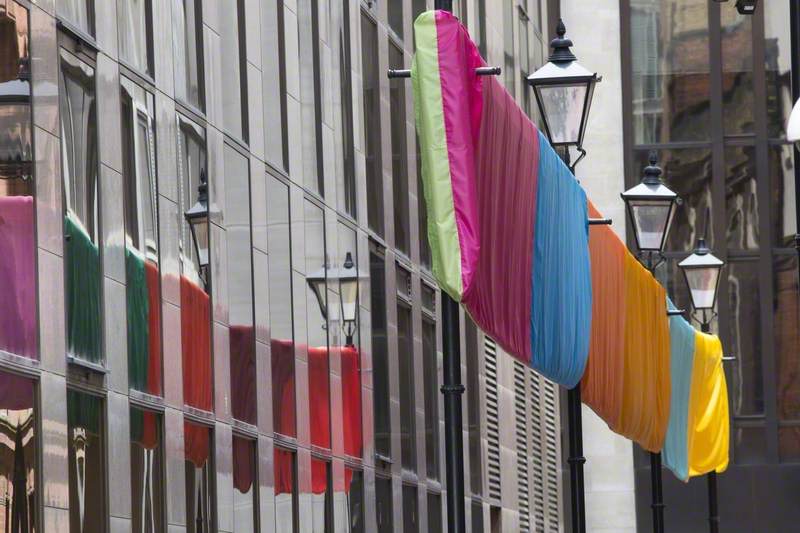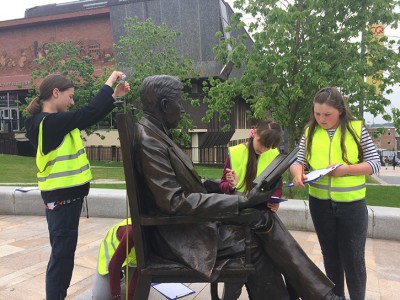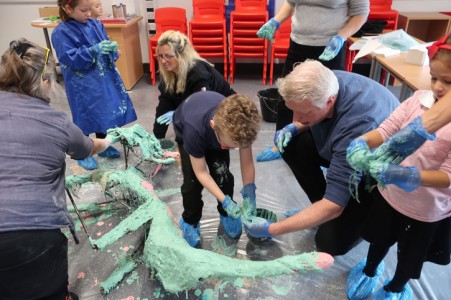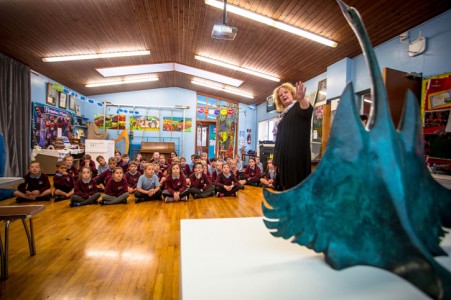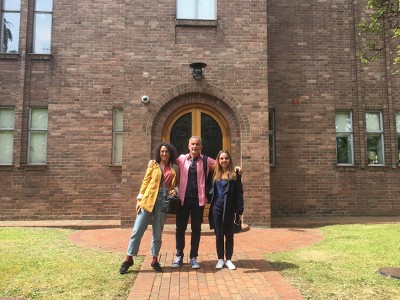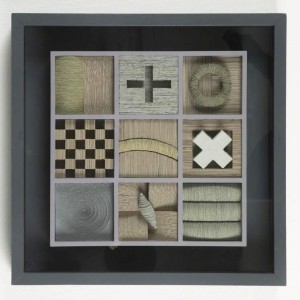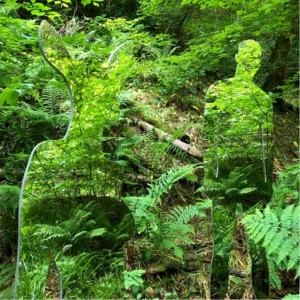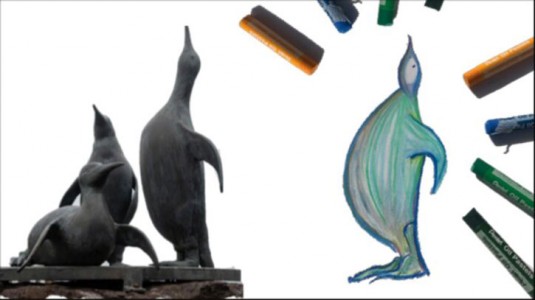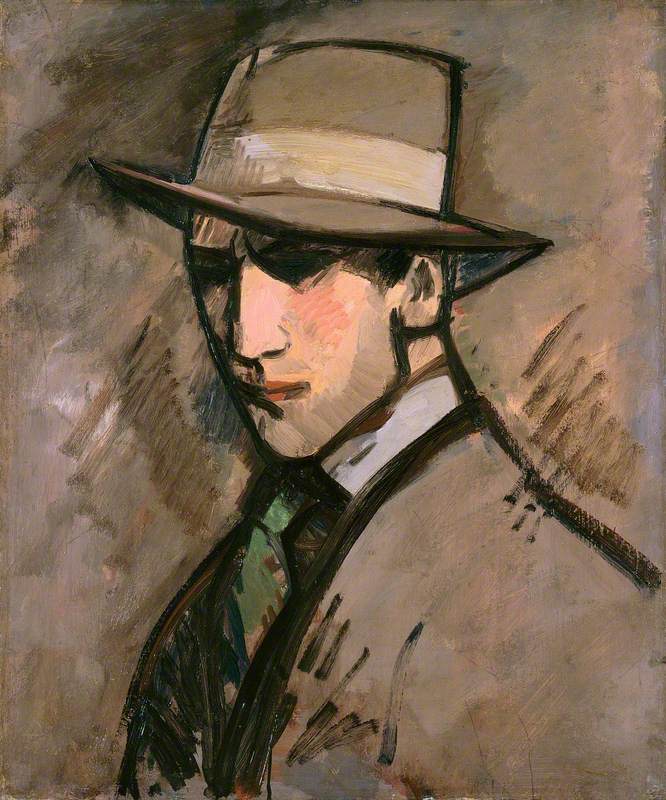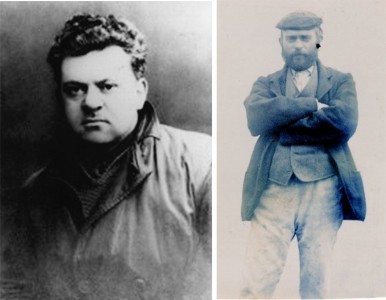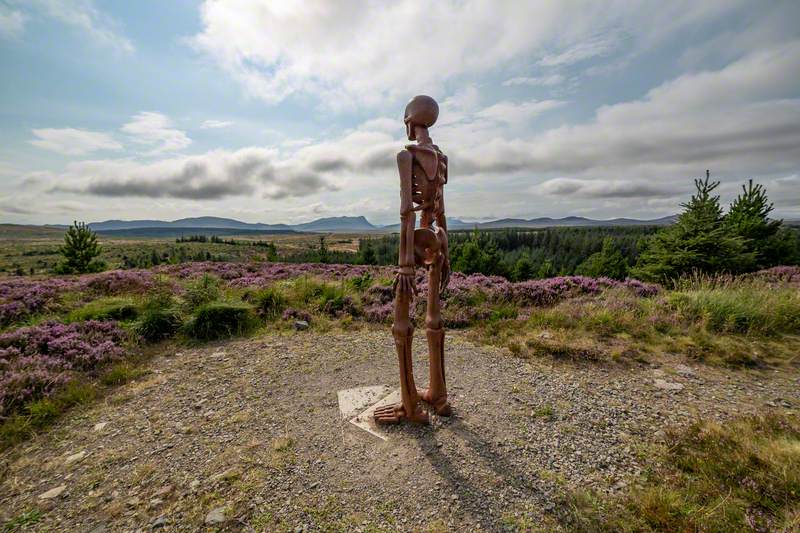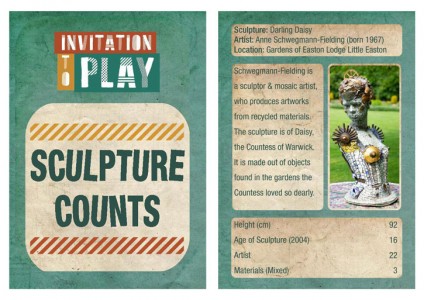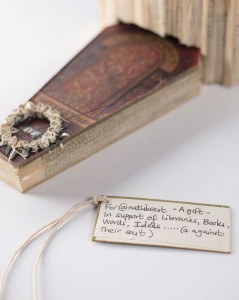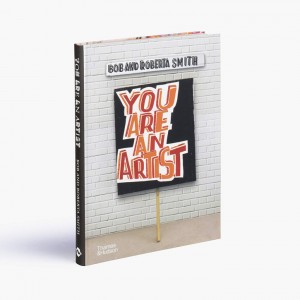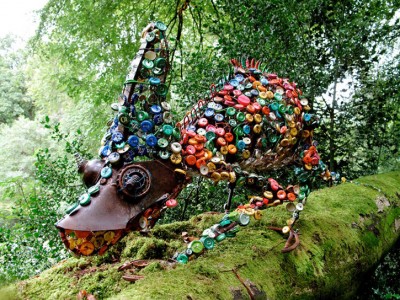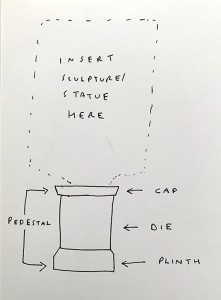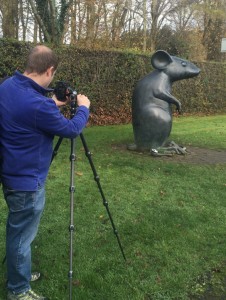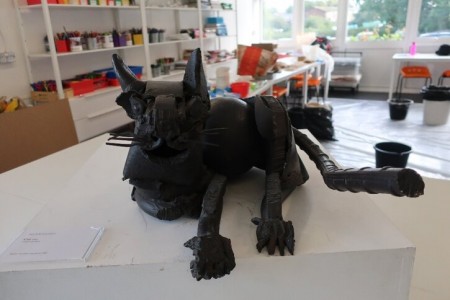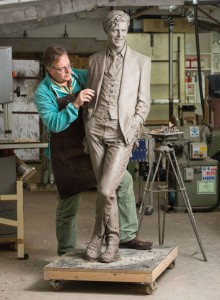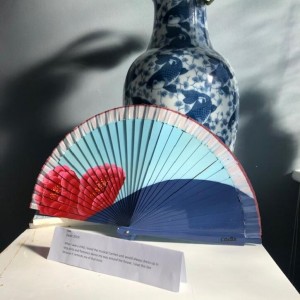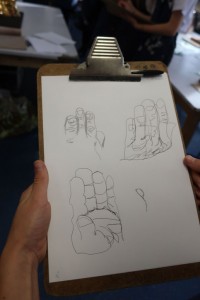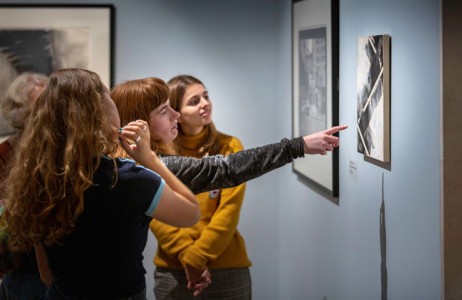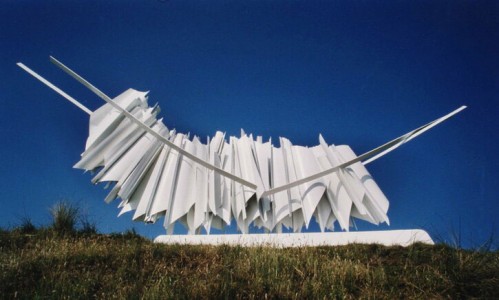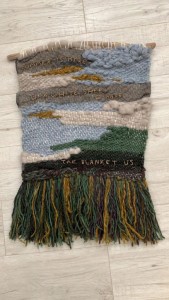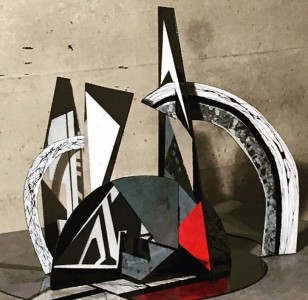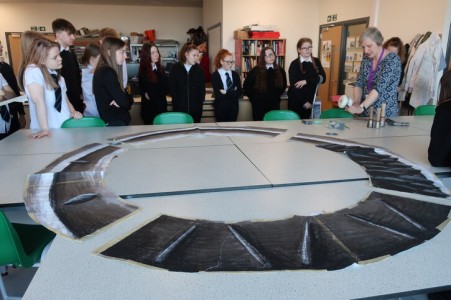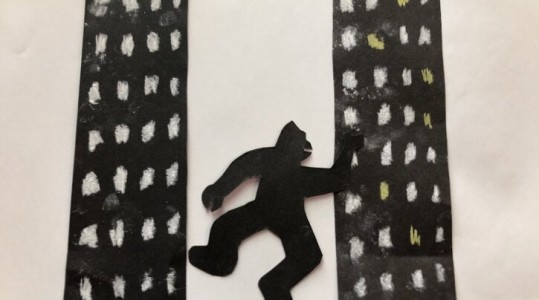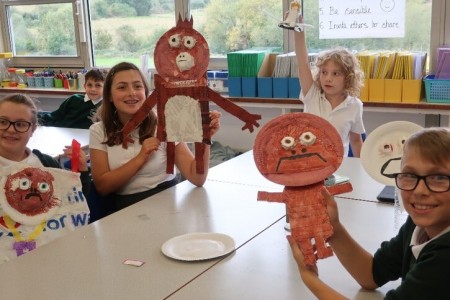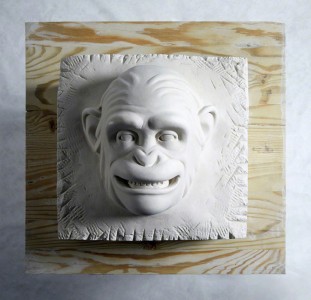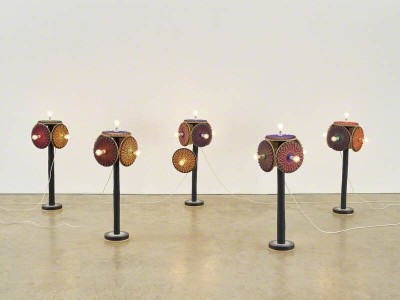Kenny Hunter's sculpture Yield Brother was an ideal choice from the Royal Scottish Academy's collection to visit a secondary school as part of our Masterpieces in Schools initiative, which brings sculptures out of galleries and museums, and into the classroom.
Like all of Hunter's sculptures, Yield Brother raises more questions than it answers. It is a depiction of an ape, but is the creature smiling or grimacing in fear or anger? The title hints at our evolutionary link to these animals, but is complicated by the use of 'yield' – do we gain something from animals, like the yielding of a crop? And is this perhaps only achieved through submission? But then, who is submitting to whom?
This questioning is in line with Hunter's wider approach of subverting expectations of who or what we commemorate in sculpture, focusing instead on the 'un-monumental', the title given to his opening presentation at Forrester High School in Edinburgh. Hunter presented other examples from across his career, including Girl with a Rucksack, first created as a response to a traditional marble statue in Aberdeen Art Gallery, with the female gallery-goer holding her bag in a similar pose as Michelangelo's David.
This led to a good amount of discussion from pupils, especially for a secondary school environment where I've found that students tend to be more hesitant to openly inquire compared with younger age groups.
Yield Brother was also particularly apt for this age group because it depicts a work in progress. The ape's head is presented on a sculptor's table as though the sculptor has just left the room to take a break from working on what is seemingly an emerging stone carving (but is, in fact, a hollow acrylic-resin cast).
This focus on process over the finished product was something that Hunter stressed is crucial for students to develop, especially if they aim to go on to art school in the future. Within the secondary school Art & Design curriculum, the focus of grading is so often on the end product that many pupils are left unwilling or unsure how to work in an exploratory manner. We were therefore very pleased to run creative workshops using clay with two S3 groups (that's around 14 years of age for non-Scottish readers).
Masterpieces in Schools with Kenny Hunter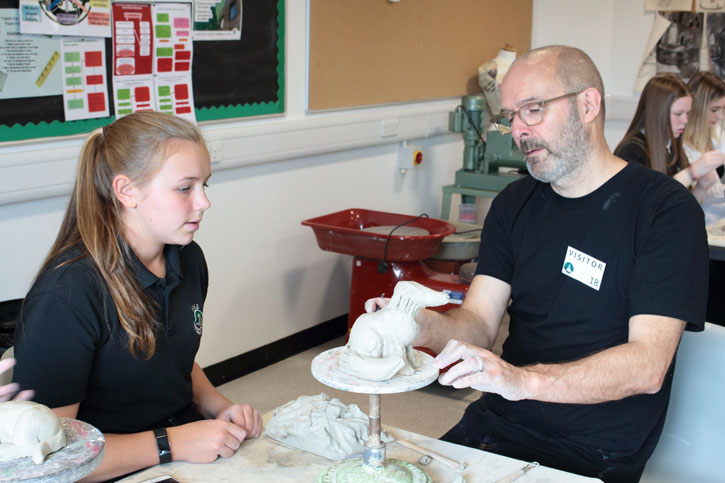
Sculpting with clay allows for a far more exploratory, fluid way of working than most other mediums. If a mistake is made, it is very easy to be reshaped and corrected, but sometimes the 'mistake' becomes the direction the sculptor wishes to go in, and it is the rest of the piece that is ultimately adjusted.
Masterpieces in Schools with Kenny Hunter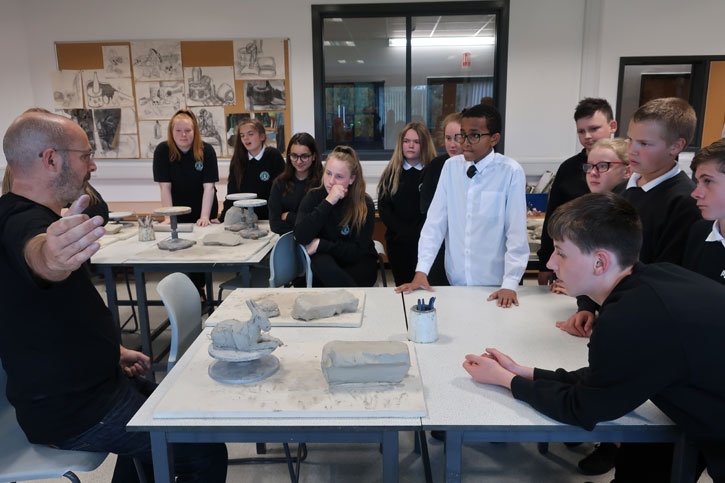
Over the course of several clay workshops I've helped facilitate as part of the Masterpieces in Schools programme, I've found that the pupils who have a natural talent with clay tend to be risk-takers who make bold choices and worry about fixing things later. In contrast, pupils who are meticulous about details and planning often find themselves trimming a piece into non-existence, or smoothing and fiddling until time has run out and a final piece hasn't fully emerged.
A pupil works with clay at a Masterpieces in Schools event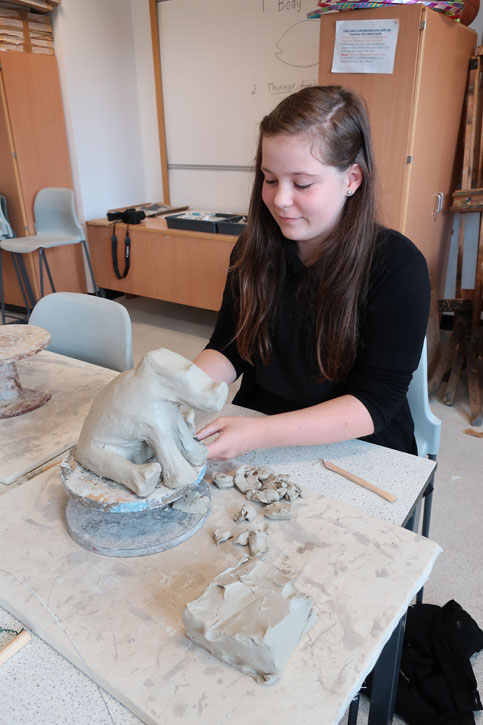
Inspired by Yield Brother, the pupils were tasked with giving clay a go – the first time ever for some – in order to sculpt their own animal. Prompts were provided in the form of visual examples from Hunter's rich oeuvre, and provocative questions such as 'Which animals do people commonly eat that we can also keep as pets?' and 'What metaphorical associations do we have with certain animals, such as a scapegoat?'
Pupils at a Masterpieces in Schools event with Kenny Hunter's 'Yield Brother'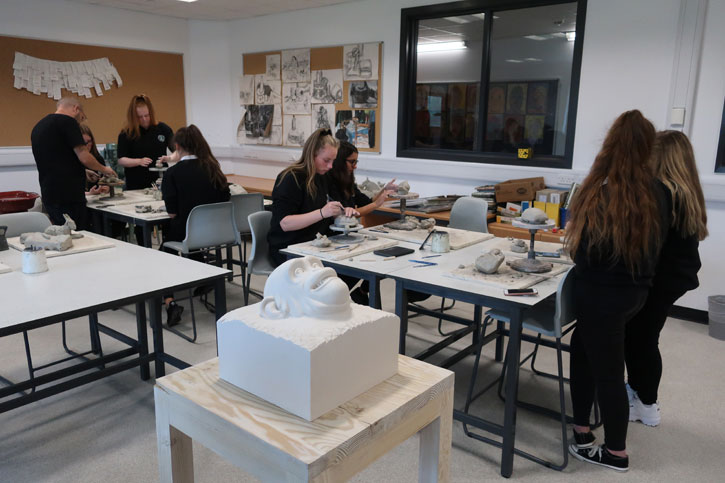
The pupils' choices were illuminating. The most popular animal was a tortoise with its protective shell, followed by kindly domestic pets (cats, dogs, rabbits), but there were also rarer animals such as a brave lion, a peaceful elephant and a snappy crocodile. Following Hunter's advice to avoid sculpting animals on potentially unstable legs (these were made without armatures since they were to be fired in a kiln!), many of the pupils decided to sculpt their animals in restful positions – sleeping dogs and dragons, cats and rhinos seated on their haunches...
The calmness of the poses reflected the peacefulness of the workshops – every time we work with clay in schools, I'm astounded by the concentrated hush and evident mindfulness that takes place. With the opportunity to work beyond the usual one or two periods available for Art & Design classes, it affords pupils the rare opportunity to just enjoy being in the moment.
One pupil's animal sculpture in particular really summed up the day: a froglet. When asked why he chose this animal, he said: 'Because it's like me – not a boy, but not yet a man. It's still growing and learning. Like an adolescent, aye? Mind blown!'
Some of the pupils' final sculptures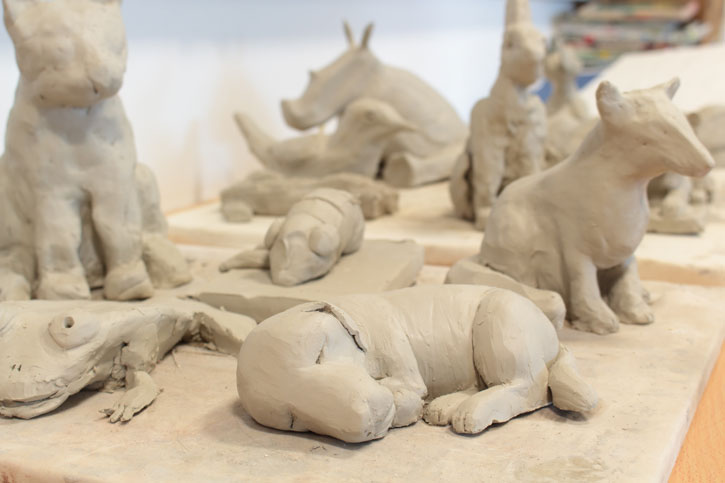
Reflecting on the success of the event, Sandy Wood, Collections Curator at the Royal Scottish Academy, explained that 'the opportunity to bring our collections out of storage and engage school kids, who could be the artists of the future, is an inspiring thing to be able to do. Art UK's Masterpieces in Schools programme is a fantastic way for us to make our collections uniquely accessible to young audiences.'
The pupils and Kenny Hunter at the Masterpieces in Schools event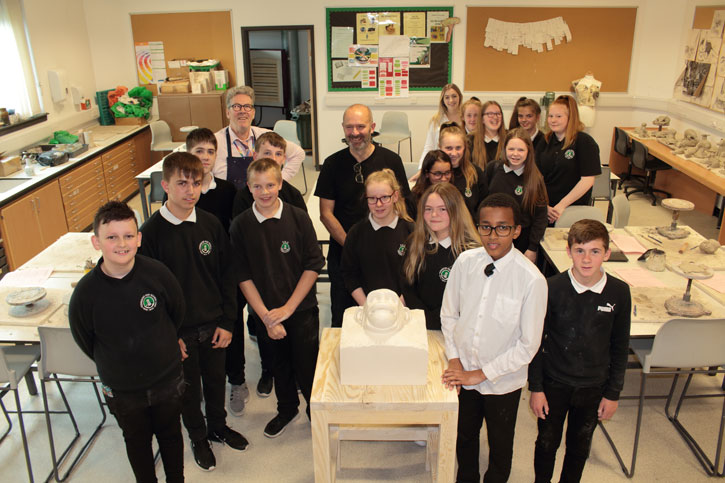
The loan of Kenny Hunter's Yield Brother to Forrester High School in Edinburgh was one of 125 Masterpieces in Schools loans taking place between 2018 and summer 2020 thanks to the generous support of the National Lottery Heritage Fund, the Stavros Niarchos Foundation, R.K. Harrison and Hiscox. Several other Masterpieces in Schools days have already taken place in Scotland, with loans from the Gordon Highlanders Museum, the Scottish Maritime Museum and the McLean Museum.
There's still time for schools to register for the initiative by emailing learning@artuk.org
Shane Strachan, Learning and Engagement Officer (Scotland and Northern England) at Art UK
